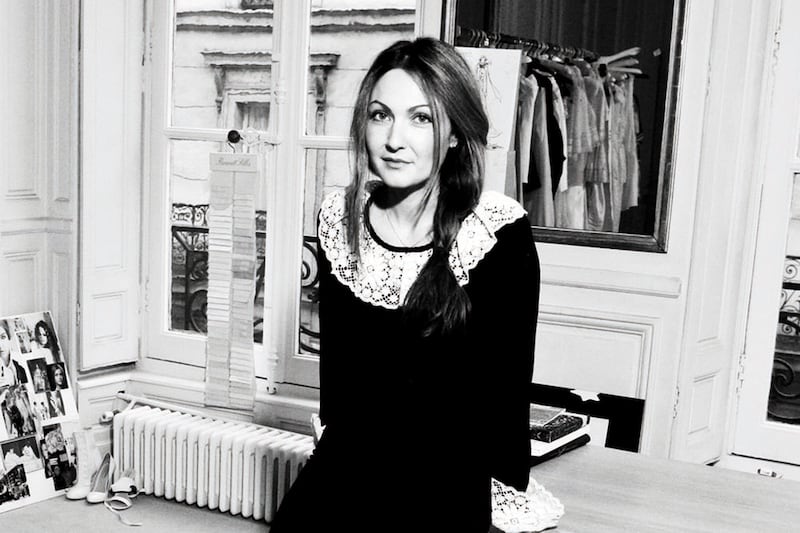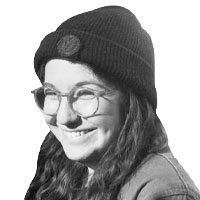
To be officially considered an haute couture label requires meeting the precise dictates of the Fédération Française de la Couture, an establishment that sets industry standards on quality and strictly polices the application of the “haute couture” title.
#Couture: the New Queens of the Haute, a French documentary that debuted on Paris Première, spotlights two young designers who employ haute couture-style practices, but do not yet have official recognition. Iris Van Herpen and Delphine Manivet each have a technical mastery that falls within the luxurious customs of haute couture. Manivet longs to be given the distinction and invited to Haute Couture Fashion Week, while Van Herpen has already been part of the calendar since 2011 and her official status is pending (she is already a guest member of Chambre Syndicale de la Haute Couture). Haute couture has existed for 150 years, and important maisons (Chanel, Dior, and their ilk) have a long history of making exquisite, inimitable looks for individual clients. Inclusion in this fashion faction means not only showing collections among peers, but also truly becoming part of the history of—and contemporary conversation around—Parisian fashion.
Dutch-born Iris Van Herpen is based in Amsterdam; her atelier was formerly a harbor warehouse repossessed by artists and turned into studio spaces. She deems her work “craft with modern techniques” and has been welcomed into the milieu despite an unconventional approach. “It’s not a traditional haute couture, but they still see it as a craft,” Van Herpen says. It can take two months to work on and manipulate a single dress into the garment she wants. She veers towards the avant-garde, using metal-powder deformed silicone piercings as textural embellishment and digital printers. “For me it’s too easy to take a feather from a bird to create a bird,” she says of her creative process—she opted for a delicate, metallic, laser-cut feather instead. Her skillfully handmade collections are created without the expected tools: “sponges replace irons, Q-tips replace needles, shoes made from a 3-D printer are adjusted with a screwdriver,” the documentary intones. Van Herpen’s skill was, fittingly, honed at Alexander McQueen. International museums are interested in exhibiting her work; Lady Gaga, Daphne Guinness, and Bjork have worn her pieces.
By contrast, French designer Delphine Manivet is more classical, trained at Rochas before leaving to craft refined bridal gowns under her own name. In line with couture practices, her gowns are “long to produce, complicated to make.” Manivet reveres the couture tradition as much for its gorgeous results as for its deep roots in French fashion custom. The documentary focuses on the gown she and her employees created for French actress Melanie Thierry to wear to a red carpet appearance in Cannes. A team of four women is shown pouring over the dress, a luxe affair of hand-embroidered pearls and sequins, shimmering and subtle, with pale tulle inserts to match the actress’s skin tone. The dress was borrowed given that it is, as Manivet says, “priceless” due to all the hours of labor that go into executing such a meticulous garment. Such dresses go on to become part of the archive and the “story of the maison de couture.” Another French actress, who was fitted at Manivet’s gilded showroom in the chic 8th arrondissement, says of the singular clothes: “something created for you allows you to create.”

Though the designers have markedly different aesthetics, both articulate how intrinsic personalization is to the process. There’s the exclusivity factor—that no one else has a dress like it—but there’s another level still, in that couture is perfectly fitted to one body alone. It’s what distinguishes it from ready-to-wear garments, which ostensibly work for a variety of different shapes. And of course, couture garments are unique in their artisanal production. As Cathy Horyn, the tell-it-like-it-is New York Times fashion journalist, points out in a cameo, “You can’t have anything systematic when it’s made by hand.”
The documentary is directed by Jean Marc Manivet, who is Delphine’s brother, a fact that isn’t quite negligible. The 35-year-old Frenchman started his career as a video editor, working on films for Loic Prigent, the French fashion film director behind Marc Jacobs & Louis Vuitton (a French TV documentary that aired in 2007) and Signé Chanel (a five-episode documentary TV mini-series that began in 2005). After months of editing, Manivet wanted to “see people outside the editing room, to feel more connected” and transitioned to directing. Designers’ ateliers, places of création brut, or raw creation, fascinated him. He says, “It’s not just about saying ‘we love that, we love that’; we have to find the details that show truth in this world.” And in this case, seeing women create pieces for women demonstrated a different sensitivity about how to make a dress. “They have an understanding of the body,” Manivet marvels. “I’d never heard a male designer think about the bust in the same way.”
The film is sprinkled with vintage clips of haute couture presentations and comments from iconic designers like Courrèges and Cardin. “It’s a long story, but it’s a simple story,” Manivet says of couture’s past. It may be “le début” of these two young designer’s careers, but to be introduced to their process is to get a glimpse into a long-standing, venerable profession. It’s a universe that has perpetuated beauty and rigorous attention to detail, fueled by patience and passion.




